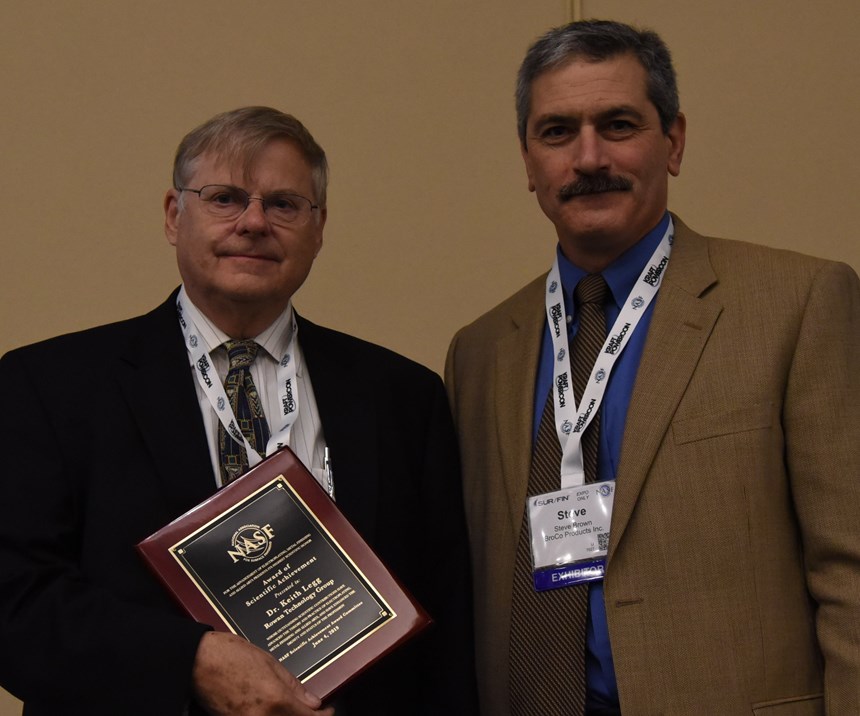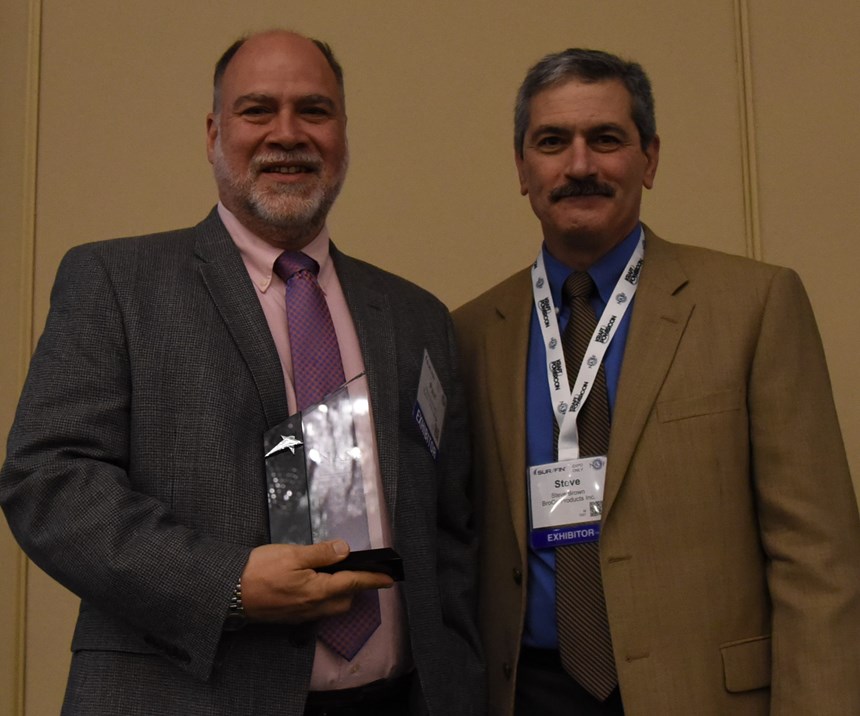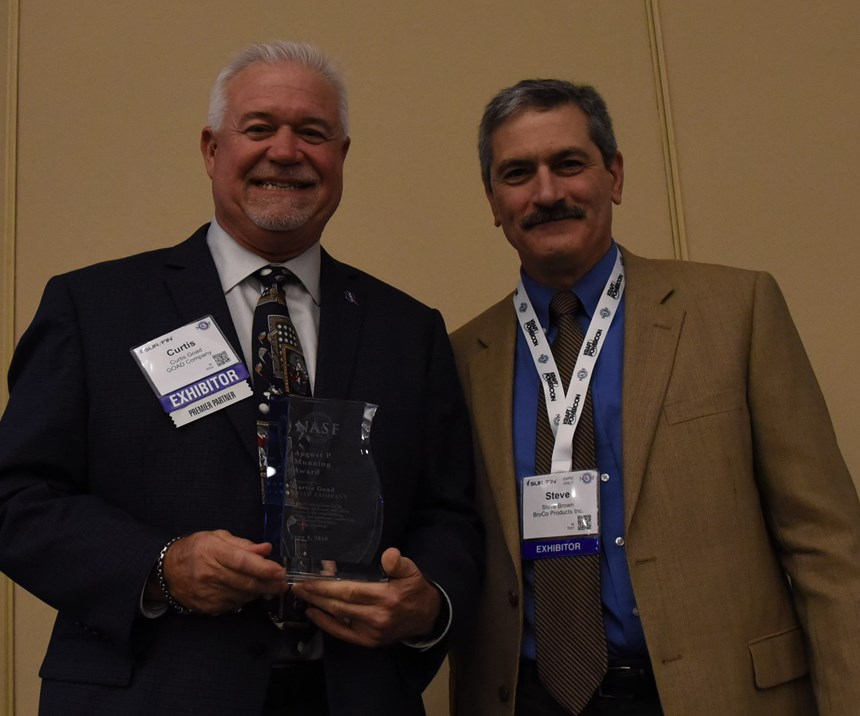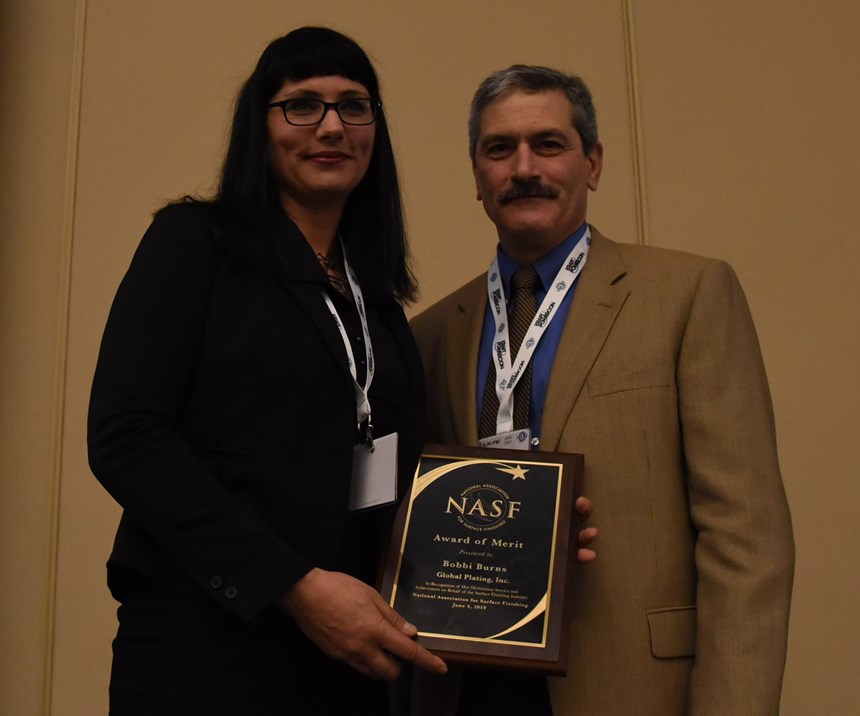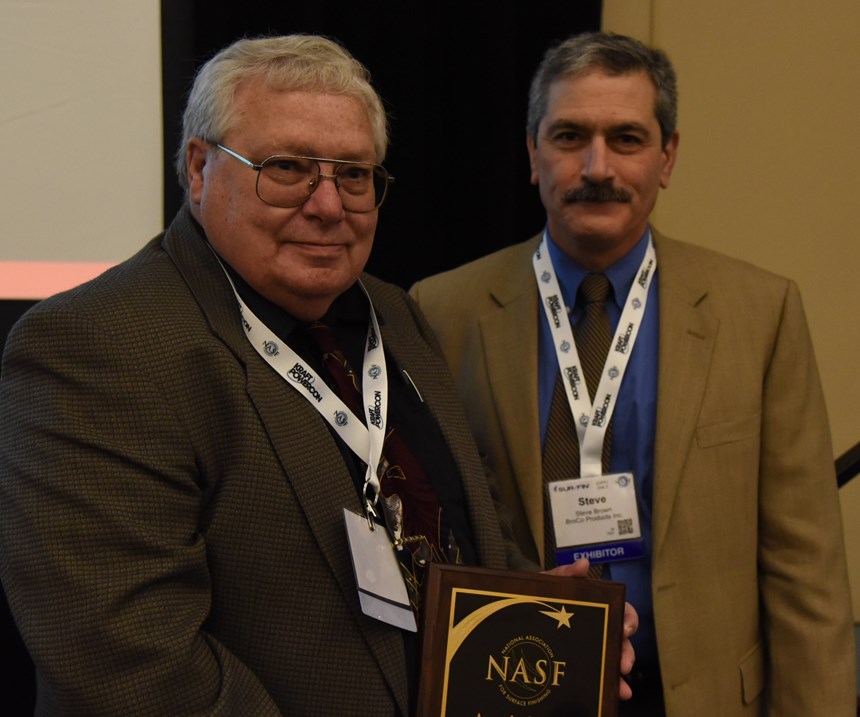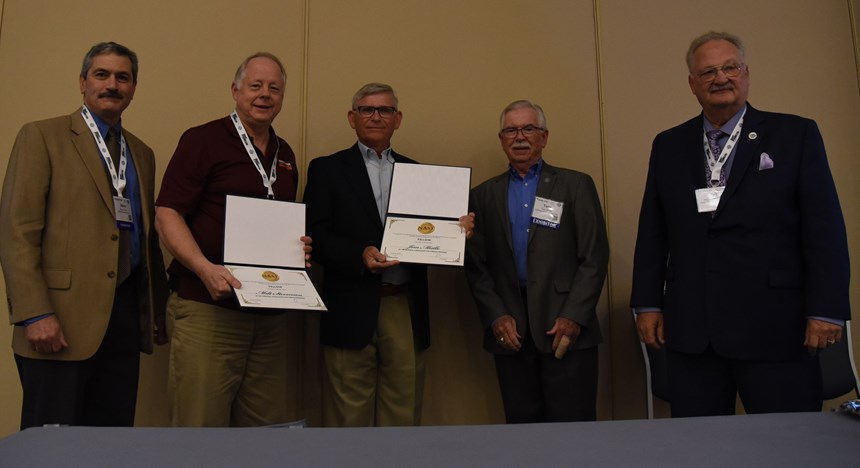NASF Honors Industry Accomplishments
National Association for Surface Finishing honored several in the industry with awards given out at the SUR/FIN trade show in Chicago in June.
#nasf #surfin
The National Association for Surface Finishing honored several in the industry with awards given out at the SUR/FIN trade show in Chicago in June.
- Dr. Keith Legg, of Corrdesa and Rowan Technology Group, received the Scientific Achievement Award in recognition of his contributions to the advancement of theory and practice of surface finishing.
- The Silvio Taormina Memorial Award was presented to Paul Brancato, of Epner Technology, for outstanding service to the finishing industry.
- Curtis Goad, from the Goad Company, was presented the August Munning Award, which is given to a supplier member who has significantly contributed to the well-being of the NASF.
- The NASF Presidential Award was given to Ray Lucas, of Valley Chrome Plating, for his service and active participation on a local and national level.
- The NASF Award of Merit is given to members of the industry who have shown meritorious service and achievement on both the local and national levels. This year’s honorees were Paul Skelton, from Big Anodes; Chris Capalbo, from New Method Plating; Bobbi Burns, from Global Plating; and Jim Hankinson, from KCH Engineering.
- Jim Miille, from Chemical Solutions, and Milt Stevenson Jr., from Anoplate, were named NASF Fellows, which recognizes outstanding service, contribution and long-standing commitment to NASF for the advancement of the best interests of the finishing industry.
RELATED CONTENT
-
A Process for Alkaline Non-cyanide Silver Plating for Direct Plating on Copper, Copper Alloys and Nickel Without a Silver Strike Bath
Traditionally, silver is electroplated in toxic, cyanide-based chemistry. Due to cyanide’s extreme hazard to human health and environments, developing non-cyanide silver chemistry is essential for the silver electroplating industry. Discussed here is an aqueous, alkaline non-cyanide silver plating technology, which can be directly plated over nickel as well as copper and its alloys. The silver deposits have perfect white color and better anti-tarnishing properties than other non-cyanide silver processes. The silver is plated entirely from the dissolving silver anode and the bath is very stable, and maintains a stable pH level both during plating and idle time. This new non-cyanide silver technology will plate bright silver that is perfectly suitable for electronic, industrial and decorative applications. .
-
AES Research Project #41: Part 4: Adhesion Failure of Electrodeposited Coatings on Anodized Aluminum Alloys
An SEM study of peel-test adhesion specimens from plated coatings on anodized aluminum shows that failure can be categorized in three different modes: (1) specimens exhibiting poor adhesion strength, which fail at the anodic film/coating interface; (2) specimens with good adhesion strength, which fail by local fracture of the anodic film and (3) specimens with excellent adhesion strength , which fail when the applied load is greater than the strength of the alloy substrate. The effect of anodizing parameters and alloy composition on peel test failure are discussed.
-
Qualitative Approach to Pulse Plating
In 1986, the AESF published Theory and Practice of Pulse Plating, edited by Jean Claude Puippe and Frank Leaman, the world’s first textbook on pulse plating. A compendium of chapters written by experts in this then-emerging field, the book quickly became the authoritative text in pulse plating. What follows here is the opening chapter, serving as an introduction to the field. Although the field has grown immensely in the intervening 35 years, the reader will find that the material remains a valuable introduction to those looking to advance the field of pulse plating.



